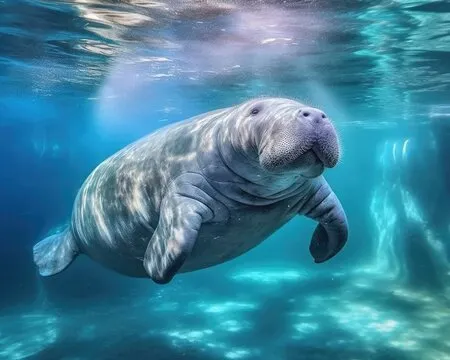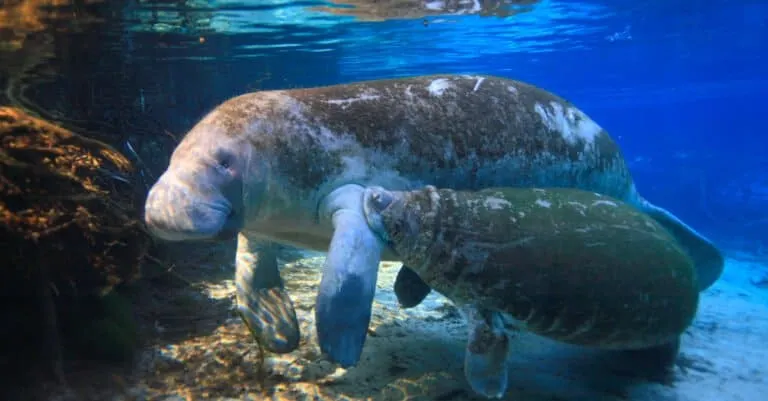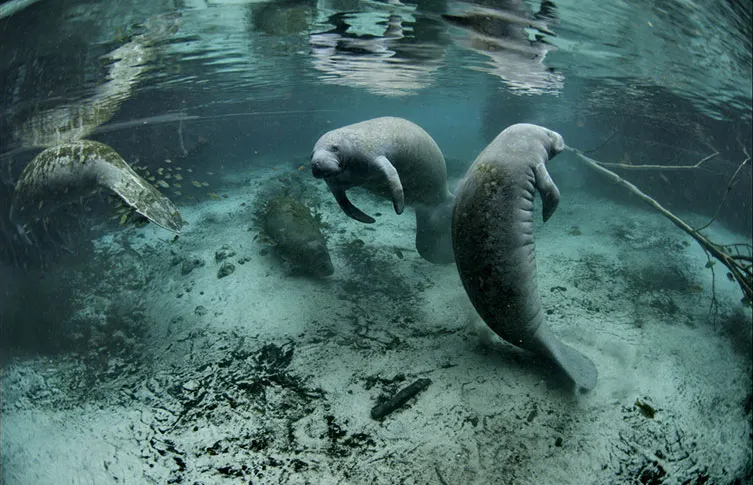All About Manatees

Manatees, often called “sea cows”, are large, slow-moving marine mammals known for their gentle nature and unique appearance. These fascinating herbivores spend their lives grazing on aquatic vegetation in warm coastal and freshwater environments. Despite their size and peaceful demeanor, manatees face many threats and are considered vulnerable to extinction. This article provides a comprehensive overview of these aquatic giants, covering their biology, behavior, habitat, diet, and conservation status.
1. What Are Manatees?
Manatees belong to the order Sirenia, which also includes the dugong. There are three species of manatees:
- West Indian Manatee (Trichechus manatus) – Found in the southeastern U.S., Caribbean, and parts of Central and South America.
- Amazonian Manatee (Trichechus inunguis) – Lives in freshwater rivers of the Amazon Basin.
- African Manatee (Trichechus senegalensis) – Native to West Africa.
They are the closest living relatives of elephants, sharing a common ancestor over 50 million years ago.
2. Physical Characteristics
- Size: 8 to 13 feet (2.4–4 meters) long
- Weight: 800 to 1,300 pounds (360–590 kg)
- Color: Gray or brown skin, often with algae or barnacles attached
- Body: Rounded with a flat, paddle-shaped tail
- Limbs: Two front flippers with “nails” used for steering and bringing food to the mouth
- Eyes & Ears: Small eyes with good vision and no external ears, but keen hearing
3. Where Do Manatees Live?
Manatees are found in warm, shallow coastal waters, rivers, and estuaries:
- West Indian Manatee: Florida, Gulf of Mexico, Caribbean, and northeastern South America
- Amazonian Manatee: Amazon River and its tributaries
- African Manatee: Coastal and inland waters of western Africa
They cannot survive in cold water, and temperatures below 68°F (20°C) can be fatal.
4. What Do Manatees Eat?
Manatees are herbivores, feeding on over 60 different types of aquatic vegetation such as:
- Seagrasses
- Algae
- Water hyacinths
- Mangrove leaves
They eat 10–15% of their body weight in vegetation daily and use their prehensile lips to grasp and tear food.

5. How Do Manatees Move and Breathe?
Despite their large size, manatees are graceful swimmers. They use their tail to propel forward and flippers to steer.
They are mammals, so they breathe air through their nostrils and must surface every 3–5 minutes, though they can hold their breath for up to 20 minutes when resting.
6. Manatee Behavior
- Solitary or Social? Usually solitary but may gather in loose groups
- Migratory: West Indian manatees migrate to warm springs or power plant outflows in winter
- Communication: Use chirps, whistles, and squeaks to communicate, especially between mothers and calves
- Playful: Often seen rolling, somersaulting, or interacting with humans and objects
7. Reproduction and Lifespan
- Mating Herds: Several males may follow a single female during mating season
- Gestation: About 12 months
- Calves: Born underwater, weigh 60–70 pounds (27–32 kg), and nurse for 1–2 years
- Lifespan: 40–60 years in the wild; some live longer in captivity
8. Threats to Manatees
Despite their peaceful nature, manatees face numerous threats:
- Boat collisions: The leading cause of manatee deaths in Florida
- Loss of habitat: Due to coastal development and pollution
- Entanglement: In fishing lines and nets
- Cold stress: From unexpected temperature drops
- Red tides: Harmful algal blooms that affect water quality and food sources
9. Conservation Status
- The West Indian Manatee was once listed as endangered but has been reclassified as threatened due to conservation efforts.
- However, population numbers are still fragile, and manatees remain vulnerable to environmental changes.
- Protected under the Marine Mammal Protection Act (1972) and Endangered Species Act (1973) in the U.S.
- Florida has several manatee sanctuaries and public awareness programs to reduce human impact.
10. Interesting Facts About Manatees
- Manatees have no natural predators.
- Their closest relatives are elephants and hyraxes.
- Their teeth are constantly replaced—a trait known as “marching molars.”
- Manatees have a low metabolic rate and minimal body fat, making them sensitive to cold.
- They rest half the day, floating near the surface or lying on river bottoms.
- Manatees are curious and may approach divers or boats, though touching them is illegal in many areas.

Conclusion
Manatees are gentle, intelligent, and highly adapted aquatic mammals that play an important role in maintaining healthy aquatic ecosystems. Their story is a powerful reminder of how human activity can impact wildlife—but also how awareness, education, and protection can help bring a species back from the brink. With continued conservation efforts, manatees can thrive in the waters they’ve called home for millennia.



